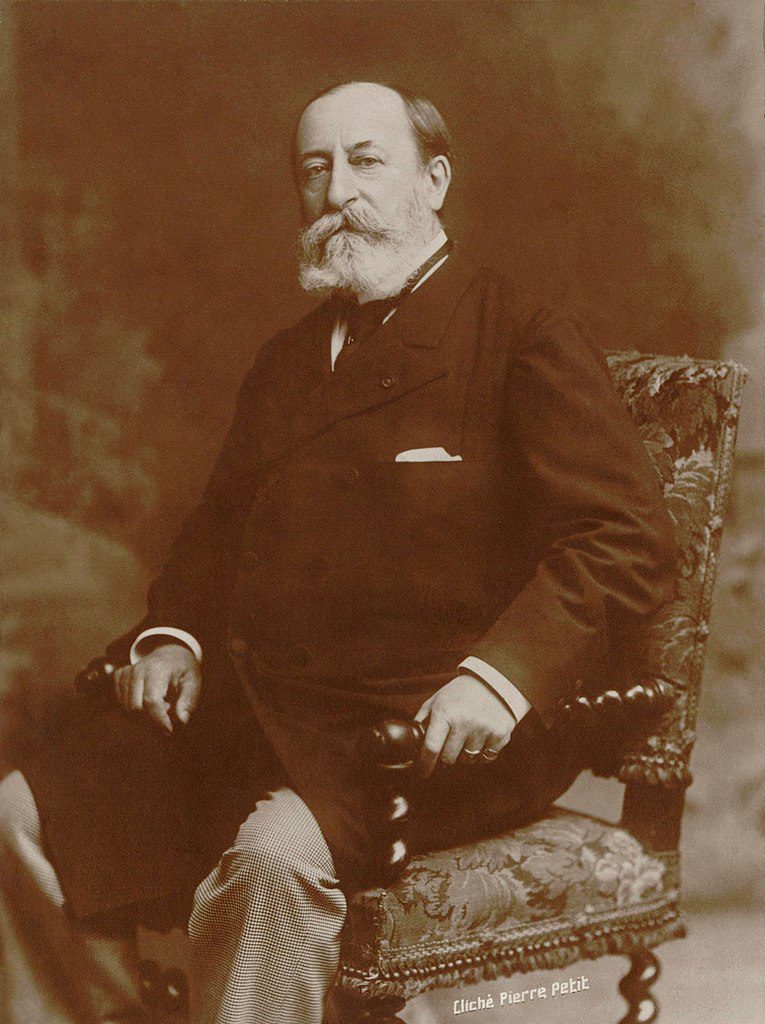Saint-Saëns, The Carnival of the Animals
 Returning to the subject of children’s music, we have to include in our list of works The Carnival of the Animals by Camille Saint-Saëns (1835-1921).
Returning to the subject of children’s music, we have to include in our list of works The Carnival of the Animals by Camille Saint-Saëns (1835-1921).
He has been described as a greater child prodigy than Mozart, but his mother resisted exposing him to the public too early. He made his performing debut as a pianist at age 10 in Paris. At the Paris Conservatory, he studied organ and composition. The organ seemed to offer more employment possibilities than piano. Saint-Saëns obtained organ jobs at Saint-Merri and subsequently at La Madeleine, both prominent positions for organists.
Saint-Saëns saw many changes in the musical world during his long life. He began as a fan of modernism and ended as a severe critic of the new music coming from Debussy and Stravinsky. In his short teaching stint early in his career he had promoted the new music of Romantic composers. We noted this in an earlier post discussing his pupil Gabriel Fauré. Saint-Saëns’ music reflects many of these newer styles, including the symphonic poems of Liszt. But the more radical styles of Impressionism and the twelve-tone school of Schoenberg struck him not as building on traditional forms, but as a wholesale rejection of traditions.
Carnival of the Animals was written as something of a joke. Saint-Saëns would not allow it to be performed during his lifetime, other than the single movement “Le cygne.” It has become his most popular work. The fourteen short movements mimic the sounds or characteristics of various animals. (You may or may not agree that “pianists” belong in the list.) They also parody other famous works. The tortoises quote Offenbach’s lively “Can-Can” slowly and ponderously in the bass. Similarly, the elephant reproduces melodies of Berlioz and Mendelssohn in the bass. The “fossils” borrow numerous tunes—folk songs, Rossini’s Barber of Seville, and Saint-Saëns’ own Danse macabre (a dance of skeletons)—all to convey the idea of things old or dead.
(This post has been updated with a different performance.)
0:31 – I Introduction et marche royale du lion (Introduction and Royal March of the Lion)
3:01 – II Poules et coqs (Hens and Roosters)
4:21 – III Hémiones (animaux véloces) (Wild Asses: Swift Animals)
5:12 – IV Tortues (Tortoises)
8:02 – V L’éléphant (The Elephant)
9:41 – VI Kangourous (Kangaroos)
10:52 – VII Aquarium
14:05 – VIII Personnages à longues oreilles (Characters with Long Ears)
14:55 – IX Le coucou au fond des bois (The Cuckoo in the Depths of the Woods)
17:27 – X Volière (Aviary)
18:57 – XI Pianistes (Pianists)
20:41 – XII Fossiles (Fossils)
22:23 – XIII Le cygne (The Swan)
26:11 – XIV Final (Finale)



